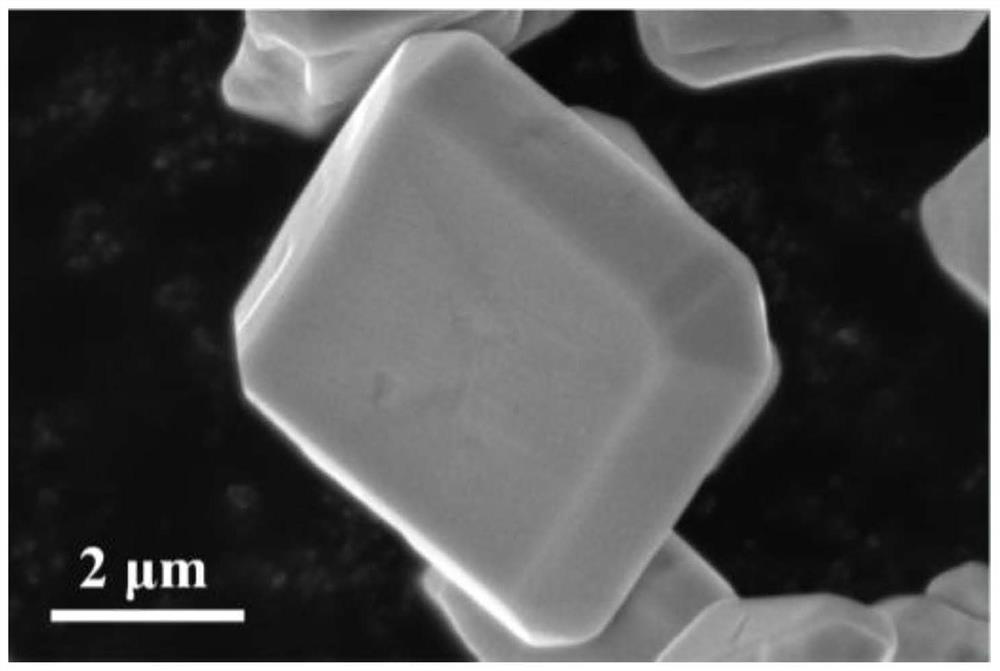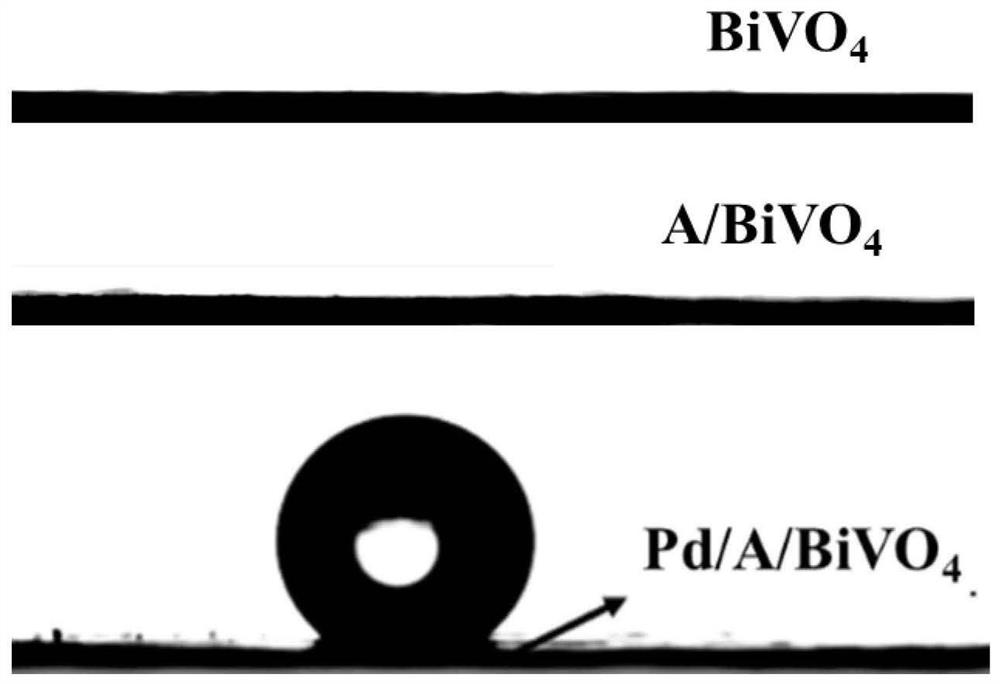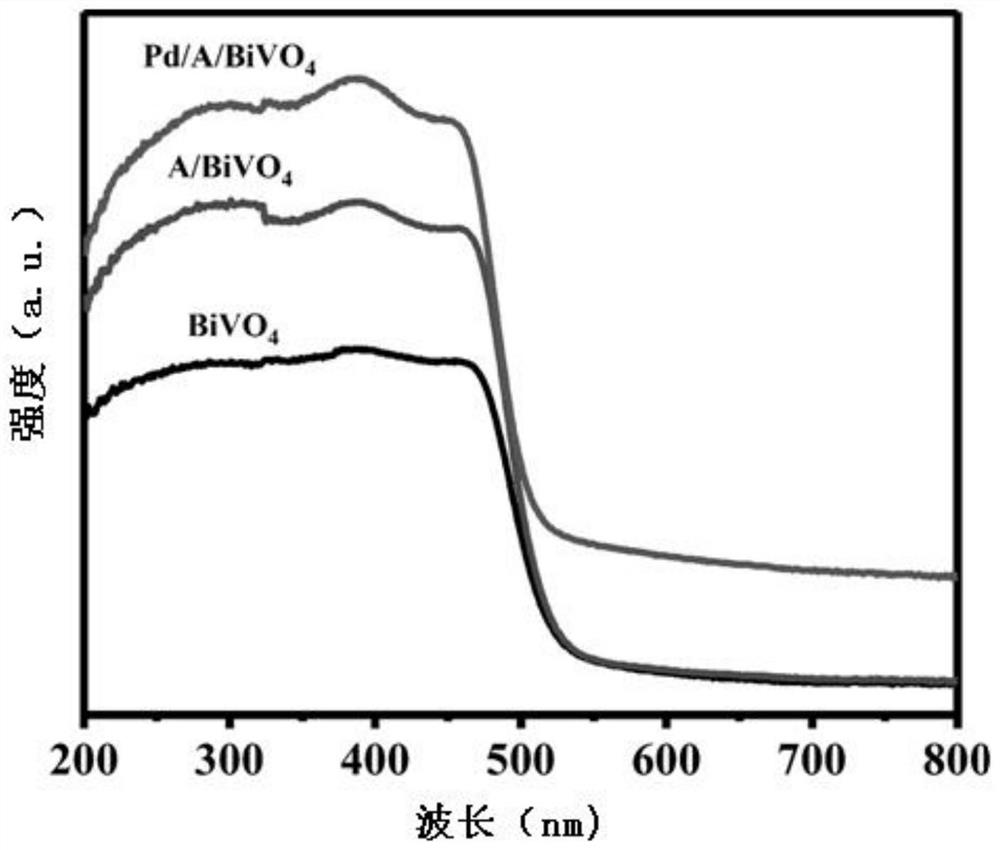BiVO4 interface photocatalyst as well as preparation method and application thereof
A photocatalyst and photocatalytic technology, which is applied in the field of photocatalytic materials, can solve the problems of low synthesis efficiency, insufficient catalytic reaction driving force, and low photon quantum efficiency, and achieve the effects of high-efficiency activation, improved synthesis efficiency, and enhanced absorption
- Summary
- Abstract
- Description
- Claims
- Application Information
AI Technical Summary
Problems solved by technology
Method used
Image
Examples
Embodiment 1
[0044] This embodiment provides a BiVO 4 The preparation method of interface photocatalyst, this method specifically comprises the following steps:
[0045] (1) Preparation of BiVO 4
[0046] Dissolve 36mmol of bismuth nitrate and ammonium metavanadate in equimolar ratio in 300ml of 2mol / L nitric acid, stir at room temperature for 30 minutes, add ammonia water dropwise to adjust the pH of the solution to 2, stir for 1 hour, and age at room temperature for 2 hours. Transfer the slurry to the reactor, conduct a hydrothermal reaction at 200°C for 24 hours, wash and dry to obtain BiVO 4 Precursor. Will get BiVO 4 The precursor was placed in a muffle furnace and calcined at 400 °C for 2 hours to obtain BiVO 4 .
[0047] (2) Preparation of ligand monolayer
[0048] Get 0.5g to get BiVO through step (1) 4 Add 200ml of a mixed solution of ethanol and water, the volume ratio of ethanol and water in the mixed solution is 4:1, ultrasonically disperse for 30 minutes, then add the ...
Embodiment 2
[0069] This embodiment provides a BiVO 4 The preparation method of interface photocatalyst, this method specifically comprises the following steps:
[0070] (1) Preparation of BiVO 4
[0071] Dissolve 10mmol of bismuth nitrate and ammonium metavanadate in equimolar ratio in 60ml of 2mol / L nitric acid, stir at 40°C for 60 minutes, add ammonia water dropwise to adjust the pH of the solution to 2.5, stir for another 2 hours, and age at room temperature for 2 hours. Transfer the slurry to the reactor, conduct a hydrothermal reaction at 200°C for 12 hours, wash and dry to obtain BiVO 4 Precursor. Will get BiVO 4 The precursor was placed in a muffle furnace and calcined at 450 °C for 2 hours to obtain BiVO 4 .
[0072] (2) Preparation of ligand monolayer
[0073] Get 0.5g to get BiVO through step (1) 4 Add 200ml of a mixed solution of ethanol and water (the volume ratio of ethanol and water is 1:1), ultrasonically disperse for 30 minutes, then add the ligand 3-aminopropyltri...
Embodiment 3
[0077] This embodiment provides a BiVO 4 The preparation method of interface photocatalyst, this method specifically comprises the following steps:
[0078] (1) Preparation of BiVO 4
[0079] Dissolve 12mmol of bismuth nitrate and ammonium metavanadate in equimolar ratio in 60ml of 2mol / L nitric acid, stir at room temperature for 60 minutes, add ammonia water dropwise to adjust the pH of the solution to 7, stir for 1 hour, and age for 2 hours at room temperature. Transfer the slurry to the reactor, conduct a hydrothermal reaction at 180°C for 24 hours, wash and dry to obtain BiVO 4 Precursor. Will get BiVO 4 The precursor was placed in a muffle furnace and calcined at 400 °C for 4 hours to obtain BiVO 4 .
[0080] (2) Preparation of ligand monolayer
[0081] Get 0.5g to get BiVO through step (1) 4 Add 200ml of a mixed solution of ethanol and water (the volume ratio of ethanol and water is 3:1), ultrasonically disperse for 30 minutes, then add the ligand 3-aminopropyltr...
PUM
 Login to View More
Login to View More Abstract
Description
Claims
Application Information
 Login to View More
Login to View More - R&D
- Intellectual Property
- Life Sciences
- Materials
- Tech Scout
- Unparalleled Data Quality
- Higher Quality Content
- 60% Fewer Hallucinations
Browse by: Latest US Patents, China's latest patents, Technical Efficacy Thesaurus, Application Domain, Technology Topic, Popular Technical Reports.
© 2025 PatSnap. All rights reserved.Legal|Privacy policy|Modern Slavery Act Transparency Statement|Sitemap|About US| Contact US: help@patsnap.com



